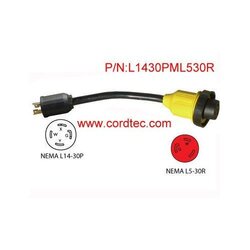- Sep 12, 2007
- 316
I just bought a etq propane genrator. It is only rated for 120v.
I already have a plug for a generator outside my home with a slide switch on the breaker box. This female plug is 125/250 30amp with 4 conductors. I also already have a 10 foot cord that matches up with this plug. Both ends have 4 conductors.
The issue I have is the generator 120v/30amp connection ony has 3 conductors. Will I be able to (with some kind of adapter) hook this generator using this cord into this plug outside my home?
Thanks
BIH
I already have a plug for a generator outside my home with a slide switch on the breaker box. This female plug is 125/250 30amp with 4 conductors. I also already have a 10 foot cord that matches up with this plug. Both ends have 4 conductors.
The issue I have is the generator 120v/30amp connection ony has 3 conductors. Will I be able to (with some kind of adapter) hook this generator using this cord into this plug outside my home?
Thanks
BIH



 So now there is no way my wife can be a ground for the stove and no longer get a shock !!
So now there is no way my wife can be a ground for the stove and no longer get a shock !!